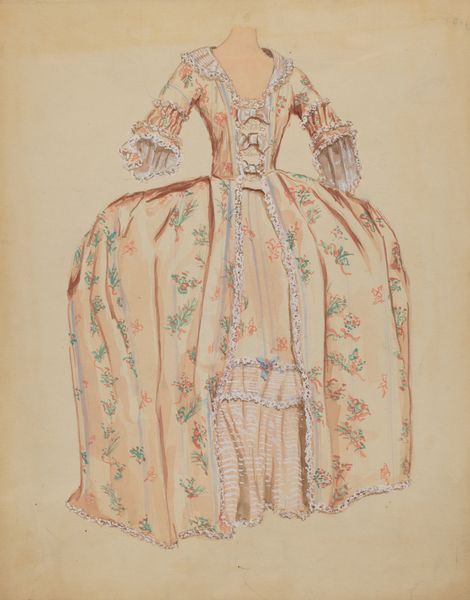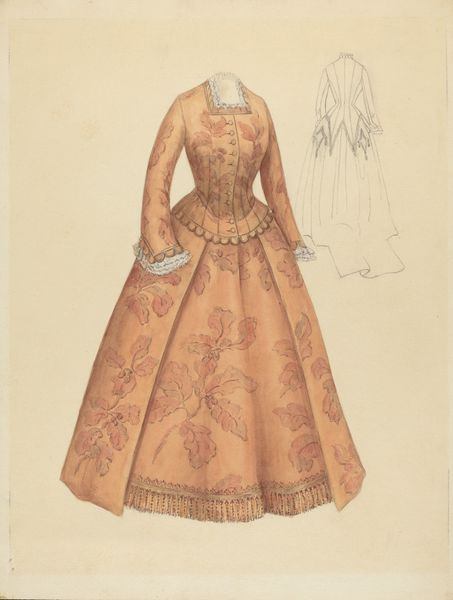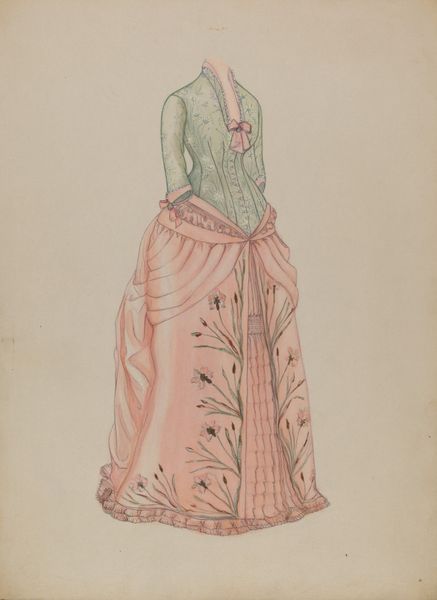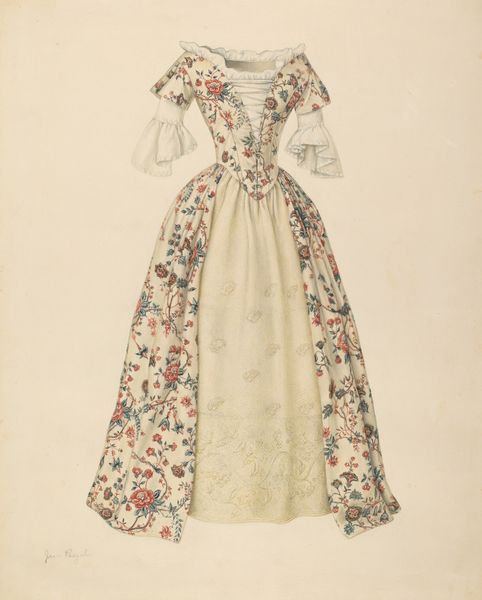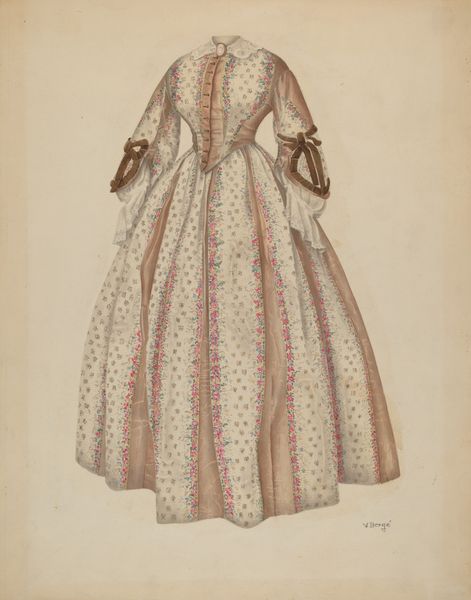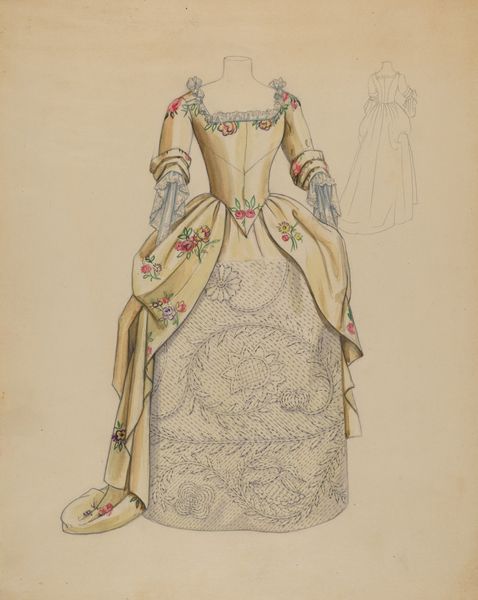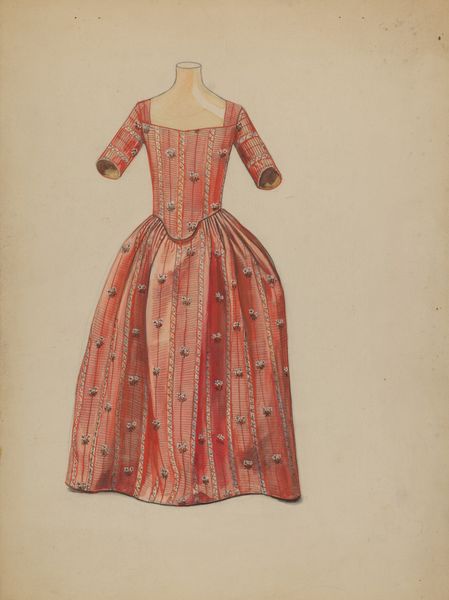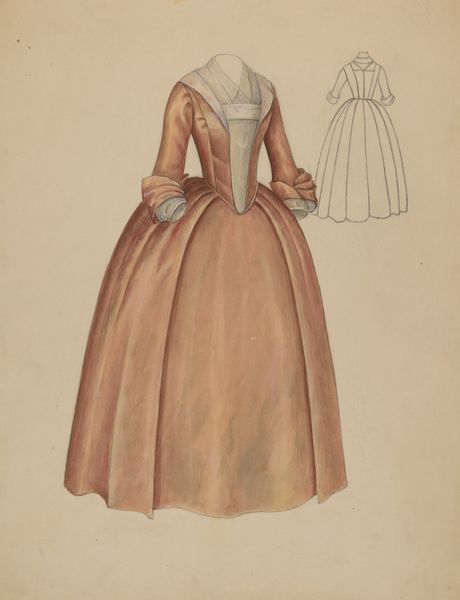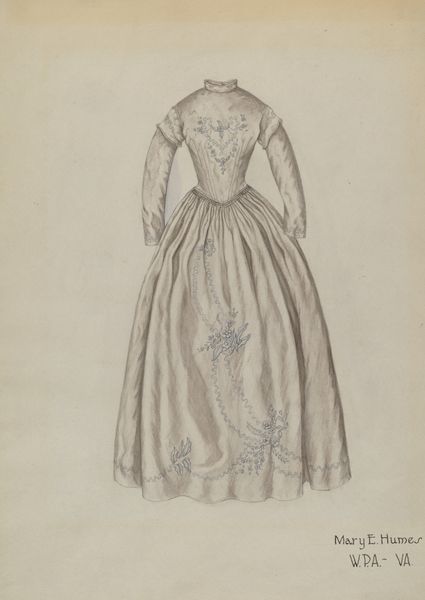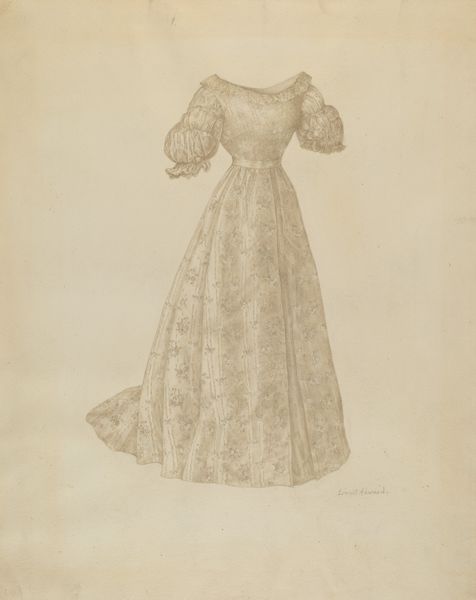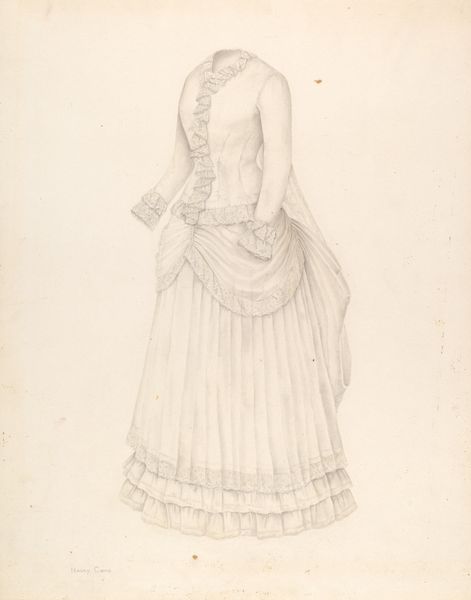
drawing, coloured-pencil, watercolor
#
drawing
#
coloured-pencil
#
figuration
#
watercolor
#
coloured pencil
#
decorative-art
#
watercolor
Dimensions: overall: 29.2 x 22.8 cm (11 1/2 x 9 in.)
Copyright: National Gallery of Art: CC0 1.0
Editor: This is "Dress," a drawing from around 1936 by Jean Gordon, rendered in watercolor and coloured pencil. It has an elegant and delicate feel to it, doesn't it? What draws your eye in this piece? Curator: My immediate thought is on the unseen labor that brings such a dress to life. Notice the intricate detailing suggested by the watercolour. How does that speak to the class divisions inherent in both its creation and its intended wear, I wonder? Editor: Class divisions? You mean like who made the dress versus who wore it? Curator: Precisely. Think about the production process. We see a suggestion of luxurious materials. Now, consider who would have been involved in the spinning, weaving, dyeing, and finally the sewing? These "decorative arts" often obscure the hands that make them, don't they? The consumption habits of the upper classes literally consuming someone else's work, what are your thoughts? Editor: I never really thought about it that way, especially with something that seems so… pretty. Curator: It's precisely the "pretty" that masks the underlying realities. Even the coloured pencil and watercolour medium, seemingly simple, requires resources and skills. Where did the materials come from, and who had access to the training to use them skillfully? Are we looking at a design for future production, or simply admiring the past? Editor: So, you're saying it's not just about the aesthetics but also about the economics of art and labour? Curator: Exactly. It challenges us to see beyond the surface, to examine the relationship between material culture, production, and the social order. Now when you look, does your eye travel in new ways? Editor: It certainly does. I see now how much information is actually embedded within something as seemingly simple as a drawing of a dress. It's more complex than I first imagined. Curator: And that complexity reveals the often-unseen network of makers and markets. Materiality matters because it reveals so much about how the world is structured.
Comments
No comments
Be the first to comment and join the conversation on the ultimate creative platform.
